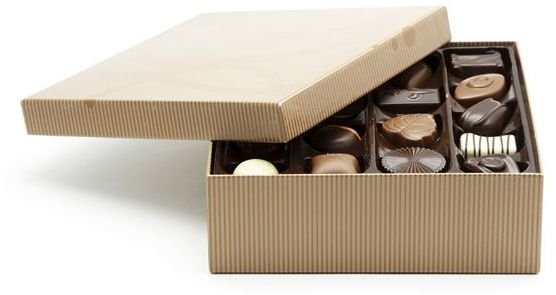Using Units & a Formula to Find the Volume of Rectangular Prism: 6th Grade Math Lesson with Chocolate Boxes!
**
Objective: Students will build units of measurement and use a formula to find the volume of a rectangular prism.
CCSS.Math.Content.6.G.A.2 Find the volume of a right rectangular prism with fractional edge lengths by packing it with unit cubes of the appropriate unit fraction edge lengths, and show that the volume is the same as would be found by multiplying the edge lengths of the prism. Apply the formulas V = l w h and V = b h to find volumes of right rectangular prisms with fractional edge lengths in the context of solving real-world and mathematical problems.
Note: Students will need to be familiar with measuring the dimensions of squares and rectangles and the concept of area.
Materials: chocolate company ads, labels and boxes, small rectangular boxes, paper (or pre-printed pages with one-inch cubes that can be cut out and folded) , scissors, tape, markers, rulers
Step One: Introduction to Project
Preparation: Display samples of chocolate company ads, labels and boxes around the room to get students interested in the activity.
Students will sit with partners or group members for this lesson. Explain to students that they are going to create their own chocolate companies, and design labels and boxes for shipping their products. Allow students 15-20 minutes to work with their groups to come up with names for their companies, and to design basic logos and slogans to use on their boxes.
As students are working, distribute rectangular boxes to groups, explaining that these will be their “shipment” boxes, and that they may begin adding logos and company names to decorate their boxes.
Step Two: Introduction to Finding Volume of Rectangular Prisms with Units
Ask students to draw (if using blank paper), cut out, and fold their measurement cubes (you may want to demonstrate this if students do not know how to cut out and fold their own cubes). The measurement cubes will be students’ “chocolates,” and if there is time, students may want to inscribe their logos on the “chocolates” that will be going in the shipping boxes. Once students have made a few cubes, ask them to estimate how many cubes they think they are going to need to fill the shipping boxes, and to write their estimates down.
After allowing 10-15 minutes to make the cubes, stop the class for a discussion on volume, and situations where people would need to know the volume of objects (you may want to present examples such as filling a swimming pool, packing food items to ship to grocery stores, knowing how much a semi-truck can carry to transport items, etc.).
Students will be asked to begin filling their shipping boxes with their chocolates, and to continue making cubes to fill the boxes until they are full.
Once boxes are full, ask students to count out the number of cubes they used, and to write the number down along with their original estimates and compare them.
Then ask students to lay their empty shipping boxes on the desks. Next to the empty shipping boxes, students will take the number of cubes they used to fill the boxes and construct a replica of the empty shipping box, noting the length, width, and height of the box in units. They will then write down the dimensions of the replica.
Step Three: Introduction to Using a Formula to Find Volume of a Rectangular Prism
Stop class for discussion, this time asking students to use rulers to measure the length, width, and height of their shipping boxes. After writing the measurements down, guide students in a discussion of the comparison of the measurements taken with a ruler compared with the number of cubes used to fill the boxes, and note how the measurements of the length, width, and height of the replica boxes compare to ruler measurements when the cubes are counted. Students should connect the relationship between the dimensions of the box measured in unit cubes and the measurements of the box determined by using a ruler.
Write the formula for volume of a rectangular prism on the board: l ∙ w ∙ h.
Students will be asked to use their ruler measurements to find the volume of their shipping boxes, and to compare the product of the multiplied numbers to the sum of the cubes they used to fill the shipping boxes.
Step Four: Application of Skill
After a quick discussion on what they learned from the activity, draw examples of rectangular prisms with dimensions on the board (they do not need to be to scale), and ask them to use formulas to find the volume of each prism. Then ask your students to draw their own 3-d shipping boxes on paper, and to give those boxes dimensions. Working in their groups, students can multiply the dimensions according to the formula to find the volume for each shipping box. Students can create “order forms,” using a chart to show their application of the skill:
<strong>Download the Chart Here.</strong>
Assessment: Collect charts from students to grade as assignment for lesson.
Extension: Ask students to make a catalogue for their chocolate company, showing various sixes of boxes along with dimensions and number of chocolates included!
Option—bring a little chocolate for your students to sample after their hard work on today’s lesson.
